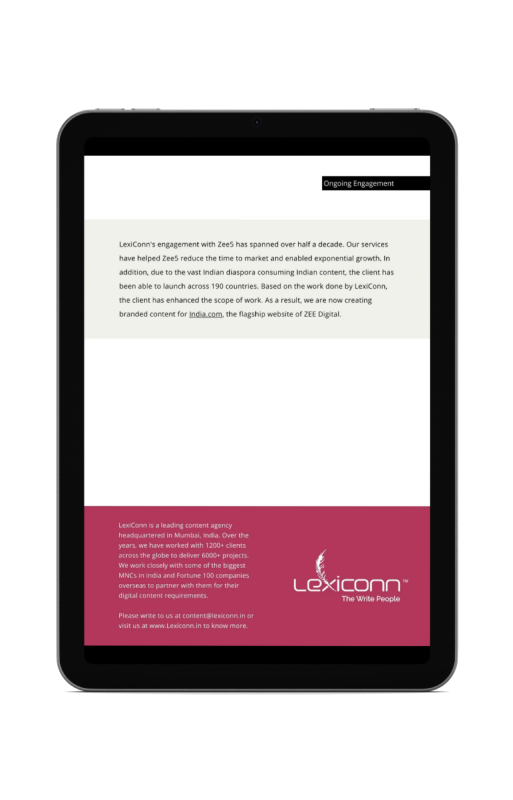

(Source)
In 2025, content is king, but auditing is the kingmaker.
As global content marketing revenue is projected to soar to a staggering $108 billion by 2026, businesses are realizing that it's not just about creating content, but strategically optimizing it.
Welcome to the era where your website's success hinges on its ability to adapt, evolve, and outperform in the ever-changing digital landscape. A content audit is your way to online supremacy. With 78% of content marketers now conducting content audits at least yearly, it's clear that those who aren't auditing are falling behind.
Are you ready to unlock the full potential of your digital assets and skyrocket your SEO success? Let's dive into the world of content audits and discover how they can transform your online presence in 2025 and beyond.

(Source)
A website content audit is a comprehensive analysis of all the content on your website. It involves systematically reviewing and evaluating your content to assess its quality, relevance, and performance. This process is crucial for maintaining a strong online presence and achieving SEO success.
A content audit is a methodical examination of your website's content assets. It involves cataloging and analyzing various elements such as web pages, blog posts, images, videos, and downloadable resources. The primary goal is to identify strengths, weaknesses, and opportunities within your content strategy.
|
See how Lexiconn conducted a content audit for HDFC Bank. Click here |
The frequency of content audits depends on various factors, including the size of your website, the rate at which you publish new content, and your specific business goals. However, as a general best practice for content audits:
Regular content audits are essential for maintaining the health and effectiveness of your website. By consistently evaluating and optimizing your content, you can ensure that your website remains a valuable resource for your audience and continues to perform well in search engine rankings.
While often used interchangeably, SEO content audits and website content audits have distinct focuses. An SEO content audit specifically targets content elements that impact search engine rankings, such as keywords, meta tags, and backlinks. It's a crucial component of how a content audit improves SEO rankings.
On the other hand, a website content audit is more comprehensive, encompassing all aspects of your site's content, including user experience, brand consistency, and overall quality. This broader approach aligns with best practices for content audits, ensuring that your content not only ranks well but also engages and converts visitors.
While an SEO content audit is essential for immediate search visibility, a full website content audit contributes to long-term SEO success by creating a solid foundation of high-quality, relevant content that search engines and users alike will appreciate.

(Source)
A well-executed content audit can significantly improve your SEO rankings by addressing key factors that search engines consider when evaluating websites. Here's how a content audit enhances your SEO performance:
Content audits help uncover technical SEO issues that may be hindering your website's performance, such as:
By addressing these issues, you improve your website's crawlability and indexability, leading to better search engine rankings.
During a content audit, you can identify opportunities to optimize crucial on-page SEO elements, including:
Ensuring these elements are properly optimized with relevant keywords can significantly boost your search engine visibility.
Content audits allow you to assess the quality and relevance of your existing content. By updating outdated information, improving readability, and ensuring your content aligns with user intent, you can enhance its value to both users and search engines.
Search engines prioritize websites that offer excellent user experiences. A content audit helps you identify areas where you can improve navigation, reduce bounce rates, and increase time on site – all factors that contribute to better SEO rankings.
By analyzing your existing content, you can uncover topics or keywords that you haven't yet addressed. Creating content to fill these gaps can attract new organic traffic and establish your website as an authoritative source in your industry.

(Source)
A successful website content audit begins with thorough preparation. This crucial phase sets the foundation for a comprehensive analysis that can significantly improve your SEO rankings.
Before diving into your content audit, it's essential to define clear, measurable goals. These objectives should align with your overall SEO strategy and business goals. Some common content audit objectives include:
By aligning your audit objectives with your SEO strategy, you ensure that every step of the process contributes to your broader digital marketing goals.
To conduct an effective content audit, you'll need a suite of tools to help you collect and analyze data. Some essential tools include:
These tools will help you gather comprehensive data about your content's performance and identify areas for improvement.
A successful content audit requires input from various stakeholders across your organization. Key team members might include:
By involving diverse perspectives, you can ensure a holistic approach to your content audit that addresses all aspects of your website's performance.

(Source)
Now that you're prepared, let's dive into the step-by-step process of conducting a website content audit that will boost your SEO success.
The first step in your content audit is to create a comprehensive inventory of all your website's content assets. This includes:
Use your chosen content inventory tool to crawl your website and generate a list of all URLs. Then, manually review and categorize each piece of content. This process provides a bird's-eye view of your content landscape and helps identify initial patterns or gaps.
Once you have your content inventory, it's time to gather performance data for each piece. Focus on these key metrics:
Use your analytics and SEO tools to collect this data. Analyze trends and patterns to identify high-performing content and areas for improvement.
Next, assess the quality of your content to ensure it meets user needs and search engine standards:
Use content quality assessment tools to evaluate readability and SEO-friendliness. Additionally, conduct manual reviews to ensure your content meets your brand's standards and user expectations.

(Source)
Finally, analyze your content for common SEO issues that may be hindering your search engine rankings:
After conducting a website content audit, the next crucial step is interpreting the results to drive your SEO success. This phase is where you'll uncover valuable insights that will shape your content strategy moving forward.
When analyzing your content audit data, look for recurring themes and patterns. These could include:
By recognizing these patterns, you can align your future content creation efforts with what works best for your audience and search engines.
Identifying your top-performing content is crucial for replicating success. Look for pages that:
These pieces of content serve as benchmarks for your content strategy and can guide your future optimization efforts.
Equally important is identifying content that's not meeting your SEO goals. This might include:
Addressing these issues can significantly improve your overall SEO performance.
A thorough content audit often reveals gaps in your content strategy. Look for:
Filling these gaps can help improve your SEO rankings and attract new audience segments.

(Source)
Once you've interpreted your content audit results, it's time to develop a strategic action plan to improve your SEO success.
High-Impact, Quick-Win Opportunities
Start with tasks that can deliver significant results with minimal effort:
These quick wins can provide immediate boosts to your SEO performance.
Long-Term Strategic Improvements
Plan for more substantial, long-term improvements:
These strategic initiatives will contribute to sustained SEO success over time.
Updating and Refreshing Existing Content
Breathe new life into your existing content:
Refreshing content can improve its performance in search rankings and attract new traffic.
Consolidating or Removing Redundant Content
Address content bloat by:
This process, known as content pruning, can improve your site's overall SEO health.
Creating New Content to Fill Gaps
Based on your content audit findings, develop new content to:
New, strategically created content can significantly boost your SEO rankings.
Dealing with Large Volumes of Content
Many websites accumulate vast amounts of content over time, making a comprehensive content audit seem daunting. To tackle this challenge:
Best practices for content audits include using a systematic approach and leveraging technology to handle large volumes efficiently.
Fixing Broken Links and Redirects
Improve user experience and crawlability by:
Improving Site Structure and Navigation
Enhance your site's architecture for better SEO:
Enhancing Page Load Speed
Improve your site's performance with:
In 2025, a website content audit is not just a luxury – it's a necessity for SEO success. By regularly evaluating and optimizing your content, you can improve your search engine rankings, enhance user experience, and stay ahead of the competition.
Remember, content audits are an ongoing process. As search engine algorithms evolve and user preferences change, it's crucial to continually assess and refine your content strategy. By making content audits a regular part of your SEO efforts, you'll be well-positioned to achieve long-term success in the digital realm.
Ready to take your website's SEO performance to the next level? Visit us at www.lexiconn.in or drop us a line at [email protected] to learn how our expert content audit and web content writing services can help you achieve your SEO goals. LexiConn also offers a FREE 30-minute Content Consultation Session to help you with your content strategy.



I have read and accept the Privacy Policy
Read More